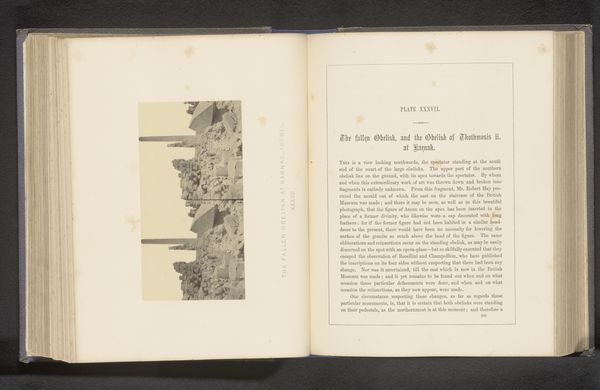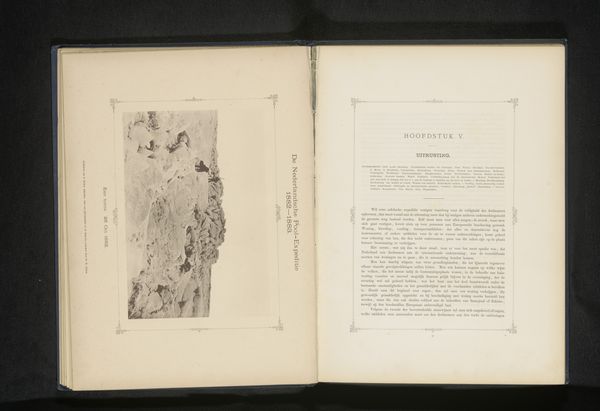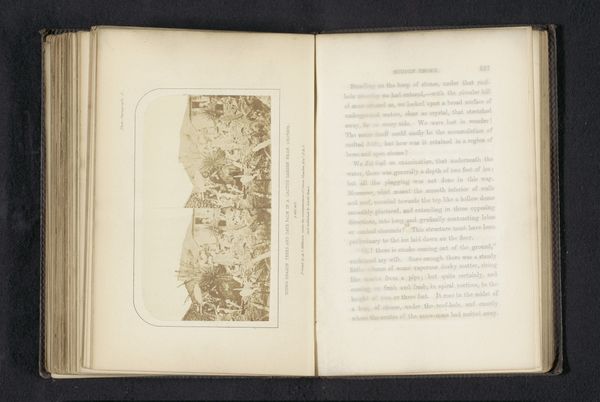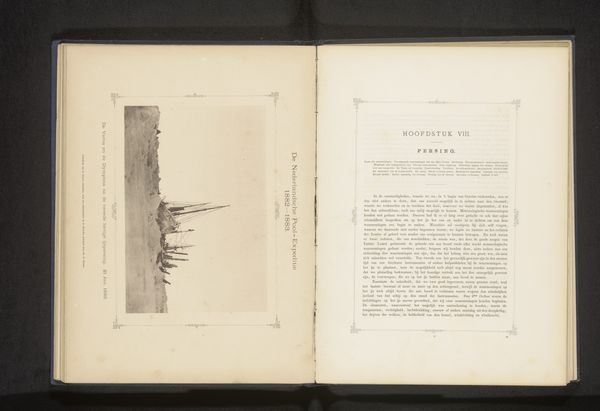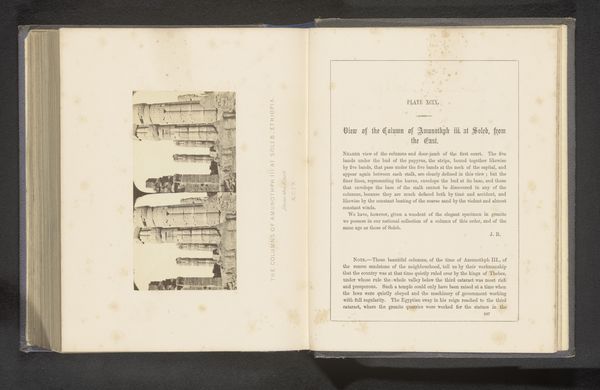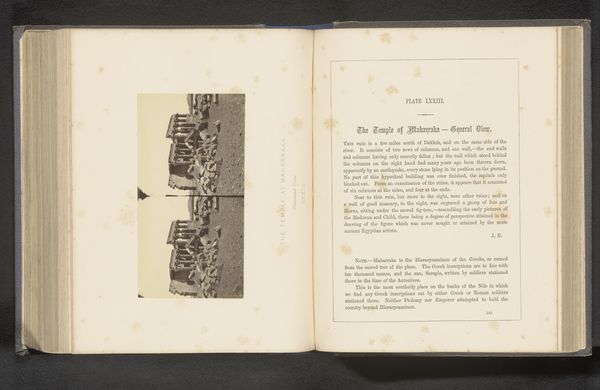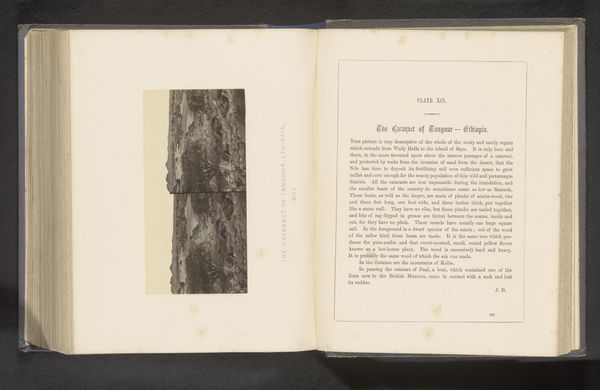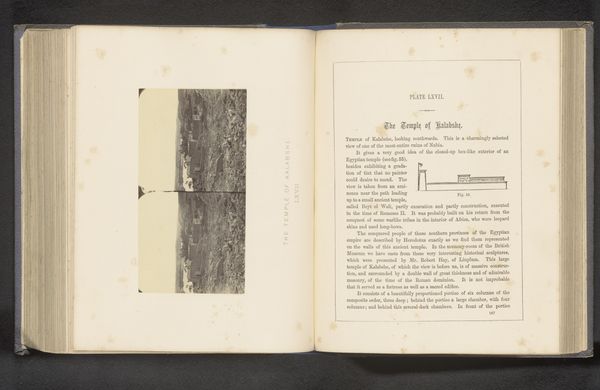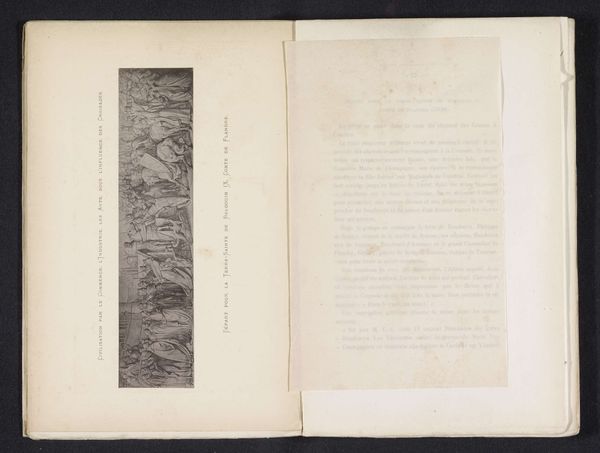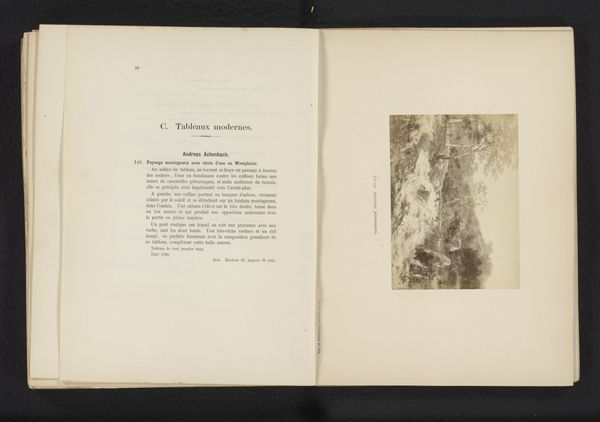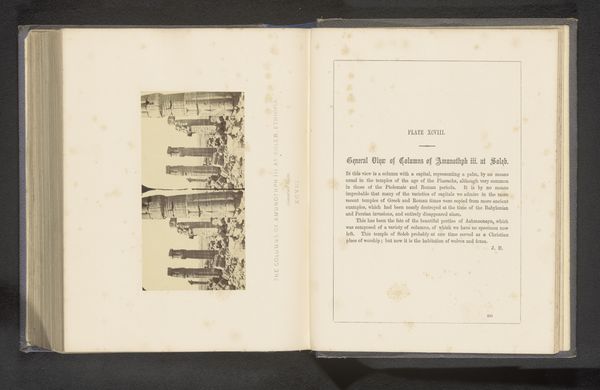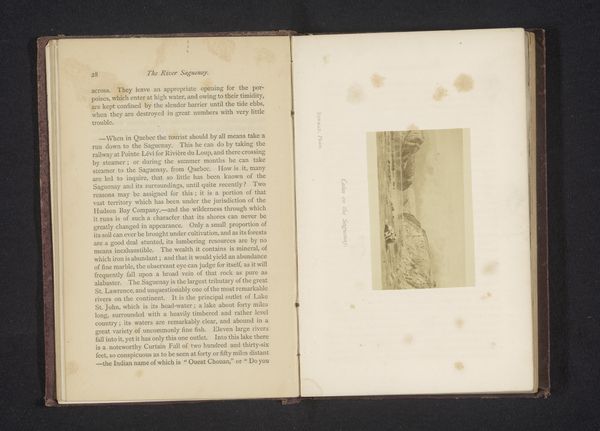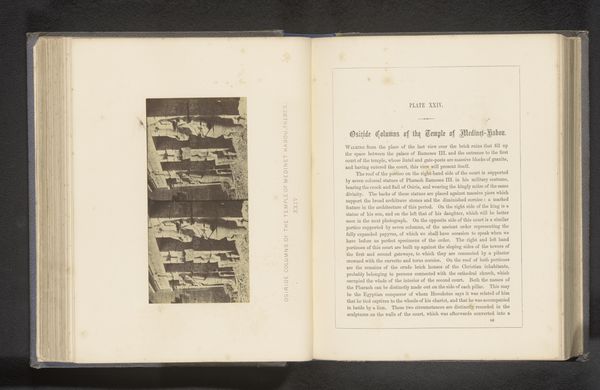
Bulletin de la Société belge d'astronomie : comptes rendues des séances mensuelles de la Société et revue des sciences d'observation : astronomie, météorologie, géodésie et physique du globe c. 1900
0:00
0:00
graphic-art, print, paper
#
graphic-art
# print
#
paper
#
modernism
Dimensions: height 247 mm, width 167 mm, thickness 24 mm
Copyright: Rijks Museum: Open Domain
Curator: This is an open volume of the Bulletin de la Société belge d'astronomie, dating from around 1900. Specifically, it showcases some accounts from the Society’s monthly meetings, featuring observational sciences like astronomy, meteorology, geodesy, and terrestrial physics, represented here in both graphic and printed forms on paper. Editor: My first thought? Stark. The facing pages create a dialogue between meticulous scientific documentation and cold abstraction. The lunar map appears like a bloodless autopsy. Curator: It’s a document embedded in its time—Modernist, as tagged—embodying the turn-of-the-century’s drive to catalog and comprehend the universe through empirical observation. The schematic representation of lunar features—craters like "Copernic", "Kepler," and "Aristarchus"—presents a visually stark, structured vision of celestial bodies. Editor: And isn’t that structuring impulse exactly the problem? Representing celestial bodies as static features flattens our understanding of their dynamic and relational existence. The disembodied map reinforces a colonial impulse, staking claims on that which is ultimately unknowable and uncontainable. Curator: Yet, this bulletin also aimed to democratize access to scientific knowledge. Printed on paper, a medium accessible to a broader audience than, say, elaborate oil paintings, these publications sought to disseminate complex research, fostering scientific literacy among an expanding middle class. Editor: But to what end? Consider the power dynamics inherent in who gets to define "scientific literacy." This dissemination of knowledge, while seemingly benevolent, simultaneously established and reinforced expert/layperson hierarchies. Curator: Regardless of inherent biases, this piece reveals an intersection of art, science, and society. It compels a closer look at not only the cosmos, but also at our assumptions regarding knowledge, authority, and representation. Editor: Precisely. By interrogating its aesthetic and contextual underpinnings, we invite the viewers to think about what knowledge is for.
Comments
No comments
Be the first to comment and join the conversation on the ultimate creative platform.
